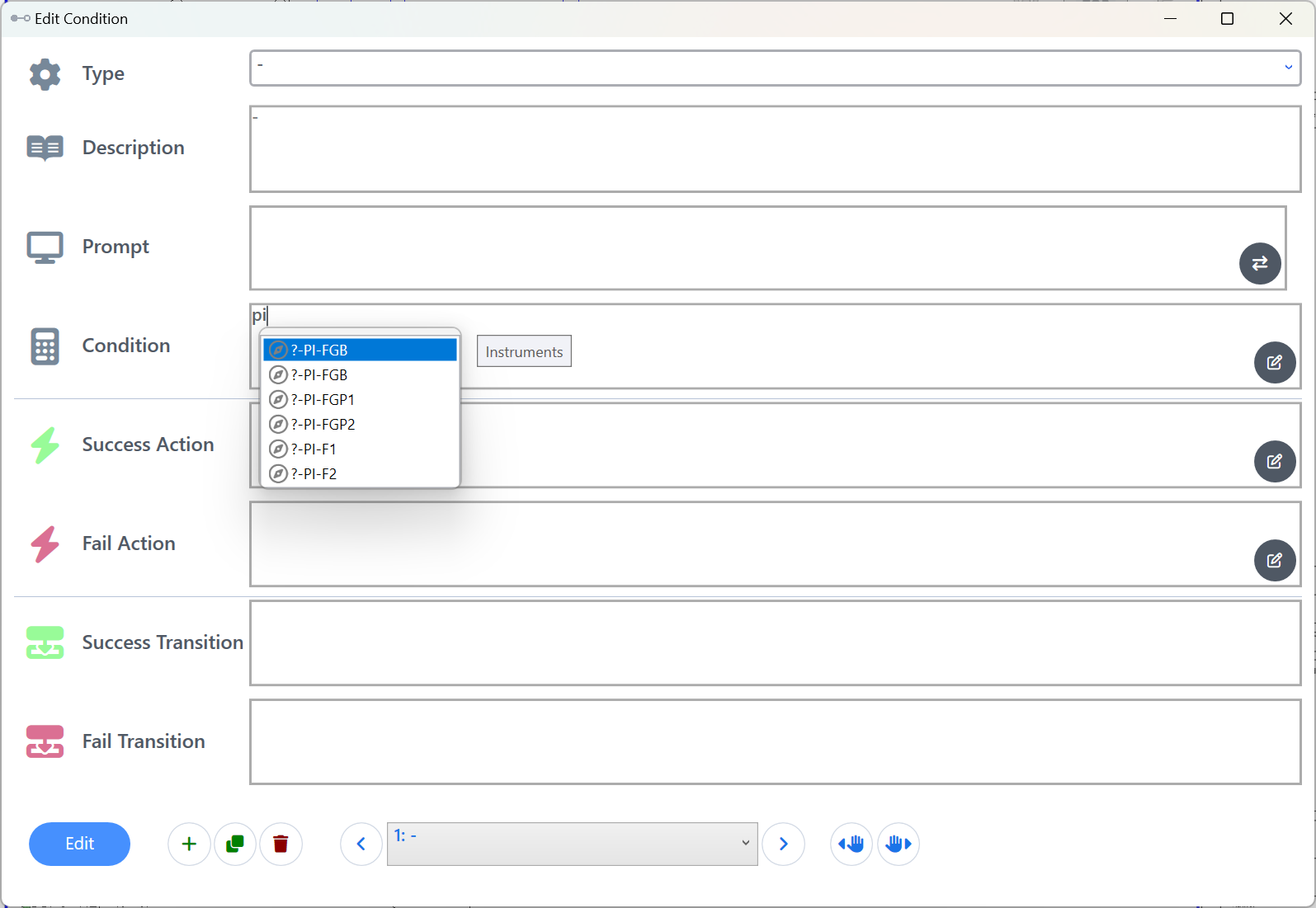Algorithm Design
Algorithm
Represents a sequence of conditions that must be fulfilled to consider the active Phase successful and proceed to the consecutive phase. It also describes which is the next Phase to continue to.
Each Phase contains one Algorithm sequence, and each Algorithm belongs to one Phase.
The Algorithm sequence contains Conditions.
Condition
A Condition represent an atomic step of the algorithm. It contains information needed for the operators and for the SCADA Systems to take a decision.
A Condition can contain custom fields, but the most relevant fields are:
Type represents the type of condition. Example: ‘Operator input’ indicates that the system should wait for the operator to input specific information.
Description represents the empirical description to easier the understanding of eventual more complicated formulas. Example: ‘Wait for the operator to introduce the desired WFI quantity’
Prompt contains the text to be prompted to the operator at each step. Examples: ‘Wait for T01 to be filled’, ‘Introduce WFI quantity’, etc.
Condition contains a formal logic representation which can be used for SCADA systems or other alternative systems. Example: ‘PIT 01 = Pressure_T01’
Note: See further how this field can be created using a Condition Builder.Success Action defines the action to be taken upon success of the condition. For example, saving a reading or a specific value to a variable: ‘VariableVolume1 = 34l’.
Note: See further how this field can be created using an Action Builder.Fail Action defines the action to be taken upon failure to complete the condition. Similar to the action
Note: See further how this field can be created using an Action Builder.Success Transition represents the next phase to go to when the current condition succeeded. By default, it is the next phase in the sequence of the process.
Fail Transition represents the next phase to go to when the current condition fails. By default, it is the next phase in the sequence of the process.
You can create custom fields for each project.
For example, the following image shows how you can customize the Condition Form Window:

Condition Editor Window
This window brings functionalities like create, edit, delete, navigate, reorder conditions of a specific Phase. All with an Intelligent Completion and text highlighting to enhance the productivity when defining conditions.
Access this window from the Alter button in the Module Ribbon | Algorithm panel.

Use the Tools in the bottom to:
Create new Condition
Duplicate the current Condition
Delete the current Condition
Navigate Previous/Select/Next Condition
Move condition to the right
Move Condition to the left
Prompt field
This field has a special behaviour. AseptSoft constantly determines the referenced Dialogs and will preview this on the right side of the field editor:

Enter the name of a dialog

Automatic preview on the right side
Click the preview to open the dialog editor.
Click the Swap button to replace the currently used Dialog with a new pick.
Note: the replacement will preserve any other text, and it will only remove the usage of the old dialog with the usage of the new one.

